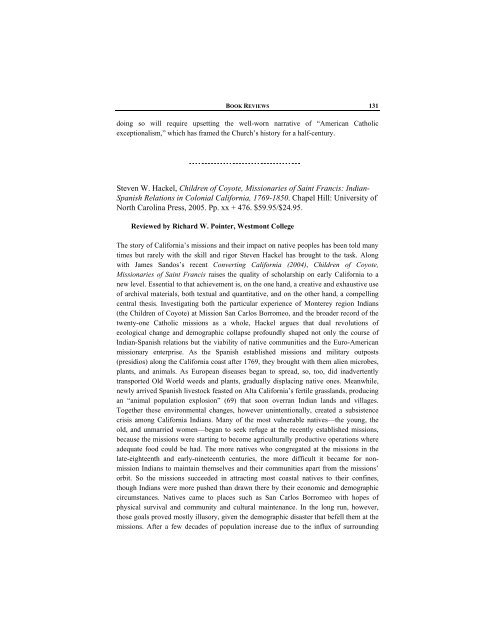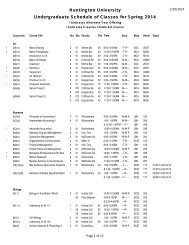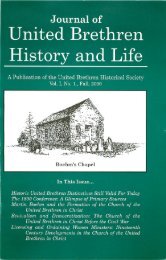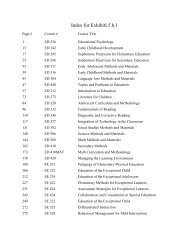Gillian Clark, Christianity and Roman Society - Huntington University
Gillian Clark, Christianity and Roman Society - Huntington University
Gillian Clark, Christianity and Roman Society - Huntington University
You also want an ePaper? Increase the reach of your titles
YUMPU automatically turns print PDFs into web optimized ePapers that Google loves.
BOOK REVIEWS 131<br />
doing so will require upsetting the well-worn narrative of “American Catholic<br />
exceptionalism,” which has framed the Church’s history for a half-century.<br />
Steven W. Hackel, Children of Coyote, Missionaries of Saint Francis: Indian-<br />
Spanish Relations in Colonial California, 1769-1850. Chapel Hill: <strong>University</strong> of<br />
North Carolina Press, 2005. Pp. xx + 476. $59.95/$24.95.<br />
Reviewed by Richard W. Pointer, Westmont College<br />
The story of California’s missions <strong>and</strong> their impact on native peoples has been told many<br />
times but rarely with the skill <strong>and</strong> rigor Steven Hackel has brought to the task. Along<br />
with James S<strong>and</strong>os’s recent Converting California (2004), Children of Coyote,<br />
Missionaries of Saint Francis raises the quality of scholarship on early California to a<br />
new level. Essential to that achievement is, on the one h<strong>and</strong>, a creative <strong>and</strong> exhaustive use<br />
of archival materials, both textual <strong>and</strong> quantitative, <strong>and</strong> on the other h<strong>and</strong>, a compelling<br />
central thesis. Investigating both the particular experience of Monterey region Indians<br />
(the Children of Coyote) at Mission San Carlos Borromeo, <strong>and</strong> the broader record of the<br />
twenty-one Catholic missions as a whole, Hackel argues that dual revolutions of<br />
ecological change <strong>and</strong> demographic collapse profoundly shaped not only the course of<br />
Indian-Spanish relations but the viability of native communities <strong>and</strong> the Euro-American<br />
missionary enterprise. As the Spanish established missions <strong>and</strong> military outposts<br />
(presidios) along the California coast after 1769, they brought with them alien microbes,<br />
plants, <strong>and</strong> animals. As European diseases began to spread, so, too, did inadvertently<br />
transported Old World weeds <strong>and</strong> plants, gradually displacing native ones. Meanwhile,<br />
newly arrived Spanish livestock feasted on Alta California’s fertile grassl<strong>and</strong>s, producing<br />
an “animal population explosion” (69) that soon overran Indian l<strong>and</strong>s <strong>and</strong> villages.<br />
Together these environmental changes, however unintentionally, created a subsistence<br />
crisis among California Indians. Many of the most vulnerable natives—the young, the<br />
old, <strong>and</strong> unmarried women—began to seek refuge at the recently established missions,<br />
because the missions were starting to become agriculturally productive operations where<br />
adequate food could be had. The more natives who congregated at the missions in the<br />
late-eighteenth <strong>and</strong> early-nineteenth centuries, the more difficult it became for nonmission<br />
Indians to maintain themselves <strong>and</strong> their communities apart from the missions’<br />
orbit. So the missions succeeded in attracting most coastal natives to their confines,<br />
though Indians were more pushed than drawn there by their economic <strong>and</strong> demographic<br />
circumstances. Natives came to places such as San Carlos Borromeo with hopes of<br />
physical survival <strong>and</strong> community <strong>and</strong> cultural maintenance. In the long run, however,<br />
those goals proved mostly illusory, given the demographic disaster that befell them at the<br />
missions. After a few decades of population increase due to the influx of surrounding
















